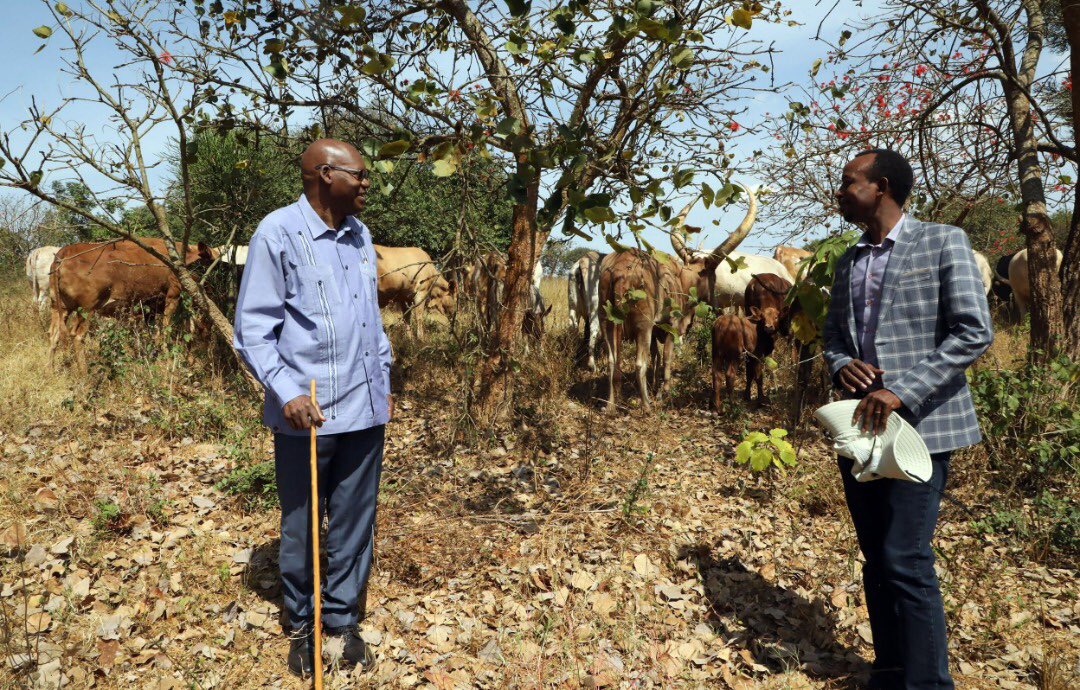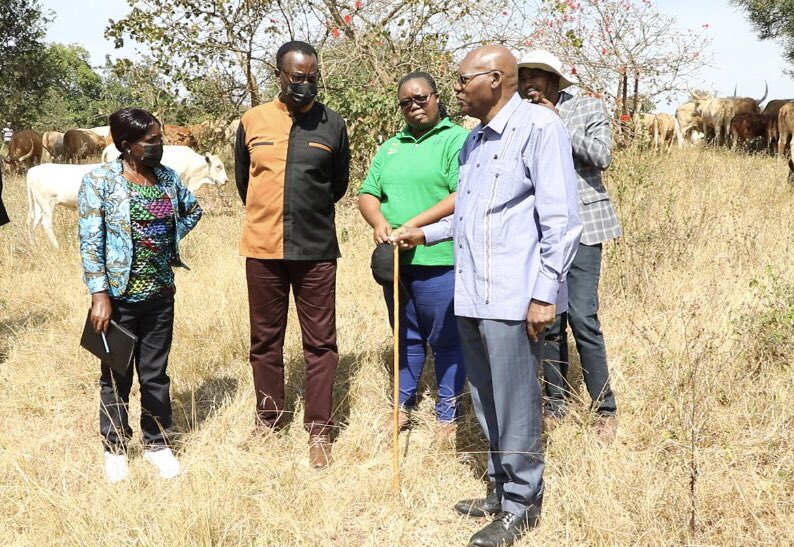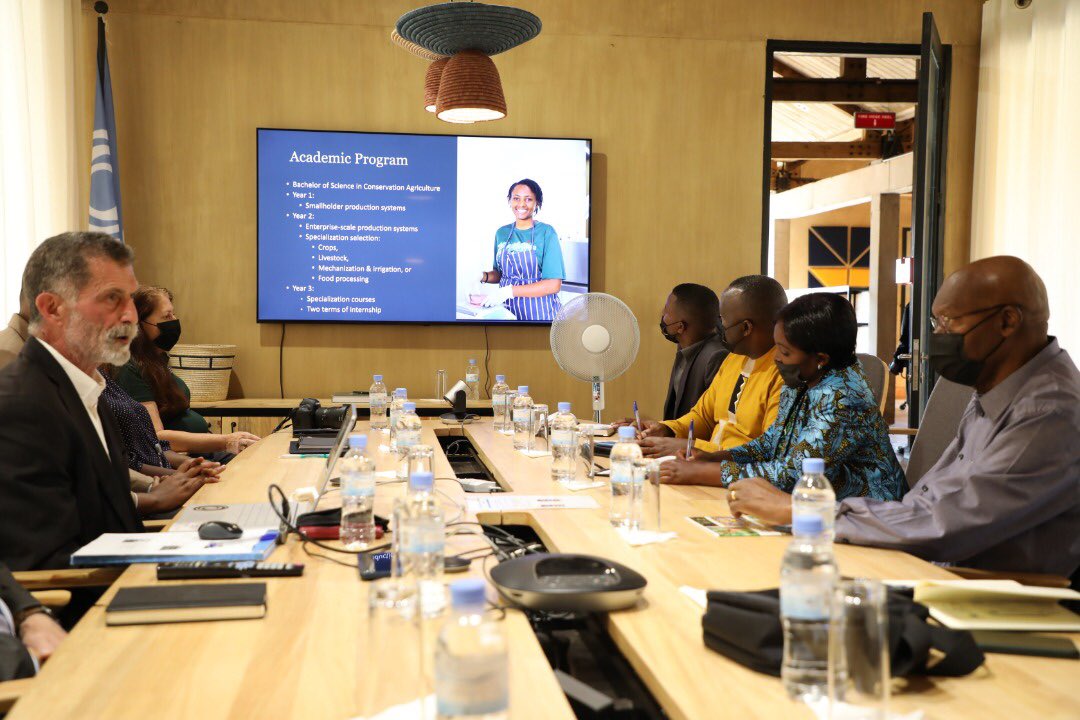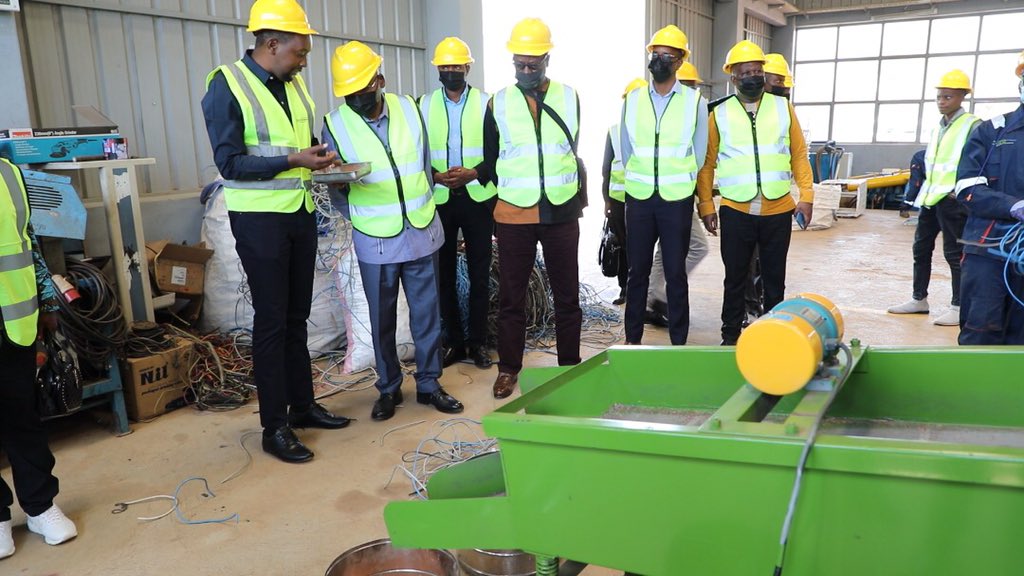
Senate President(L) in the visit of Gako Beef Project
Senate President, Augustin Iyamuremye has visited development activities in Bugesera district which are aimed at improving the country’s sustainable agricultural and green growth agenda.
Iyamuremye, who was accompanied by fellow Senators and local officials, on July 14, 2022, visited Rwanda Institute for Conservation Agriculture, Enviroserve Rwanda Green Park, and Gako Meat Company ltd.
The national projects are part of the country’s agenda to reduce environmental pollution through recycling electronic and plastic waste, and promotion of innovation and entrepreneurship in agriculture through conservation.
At Gako Meat Company ltd, formerly Gako beef project the senate president was concerned about how the project will be able to make returns on investments, especially that already a lot of money has been invested in the program yet parliament and audit reports indicate that the project remains underperforming.

Initiated by the government in 2014 as a flagship program, the Gako project was designed to add value to the livestock industry and boost meat production for local and for export markets.
The project was expected to be completed on December 30, 2019, but as of June 2020, at least Rwf14 billion had been invested, according to the Public Accounts Committee (PAC).
“Weaknesses were identified in the implementation of the Gako Beef project in which billions of Rwandan francs had already been invested, yet it had not yet started sufficient production,” said Valens Muhakwa, Chairperson of PAC while presenting the Committee report in November 2021.
New data shows that so far 26%- Rwf22.1billion has been injected into the project with a total projected investment planned at $62.3million (Rwf62.3billion).
With this investment, the project managers said that there was a revision in project implementation (ownership and business model) including adding the in-field irrigation.

Visit at RICA
However, the objective of meat exports remained the same and so far 5,000 cows are on the farm seated on 5.919 hectares with a progressive plan of shifting from rearing general cows to hybrid beef cows to gradually attain the goal of having 56,000 cows in the feedlots (for fattening) and a target of slaughtering 86,400 cows annually.
So far the project is producing between 6 to 8 tons of cow caucus (only supplied locally) and the feedlot, fattening site, and slaughterhouse are planned for construction next year; however, the project faces issues of cow ticks, dry spells among major challenges.
Senator Iyamuremye said that the project has potentials if it can copy from other success stories in Botswana, South Africa to able the project to run towards supplying the foreign market as planned, and thus reduce dependence on imported meat.

Visiting Enviroserve
“To address some of these challenges, we should be able to revive the research component on ticks, which existed before the genocide,” Iyamuremye said.
Dr. Solange Uwituze, the Rwanda Agriculture and Animal Resources Development Board (RAB) Deputy Director General said that with the completion of the feedlot and in-field irrigation, the project will be able to start with slaughtering 200 beef cows per hour to enable the project to meet its goals of 156,000 tons per year.
The meat value chain has been identified as a key sector to drive the 4th Plan for Strategic Transformation of Agriculture (PSTA4) as the demand for meat is expected to increase due to changes in dietary patterns as a result of per capita income growth.
Officials of the ministry of trade and commerce and RAB have earlier on said that Rwanda will embark on improving the meat value chain so as to increase both local production and capacity to export meat to neighboring countries and beyond.
This is expected to enable Rwanda to meet the 200metric tonnes per year target from the current estimated 170 metric tonnes per year.

